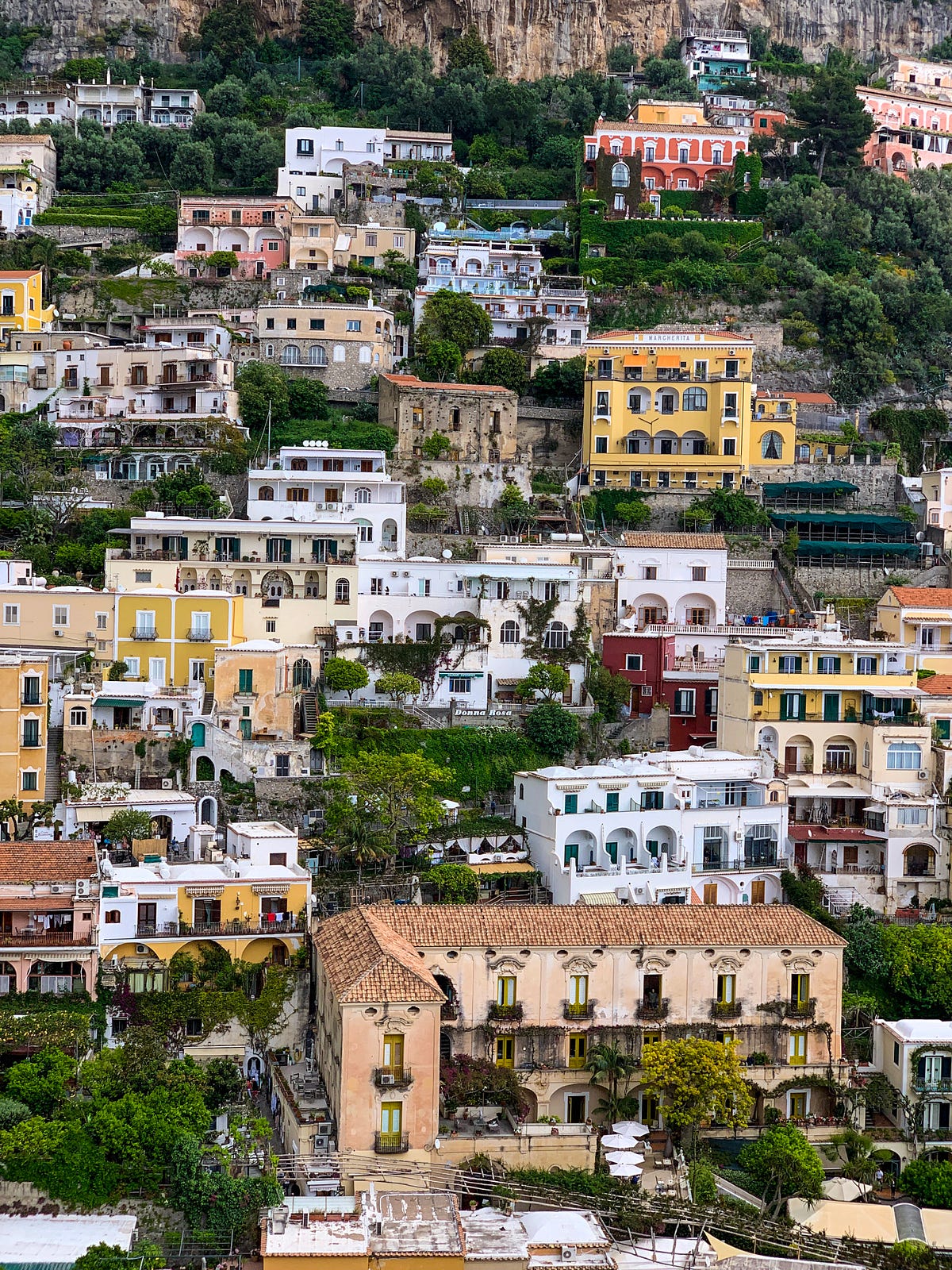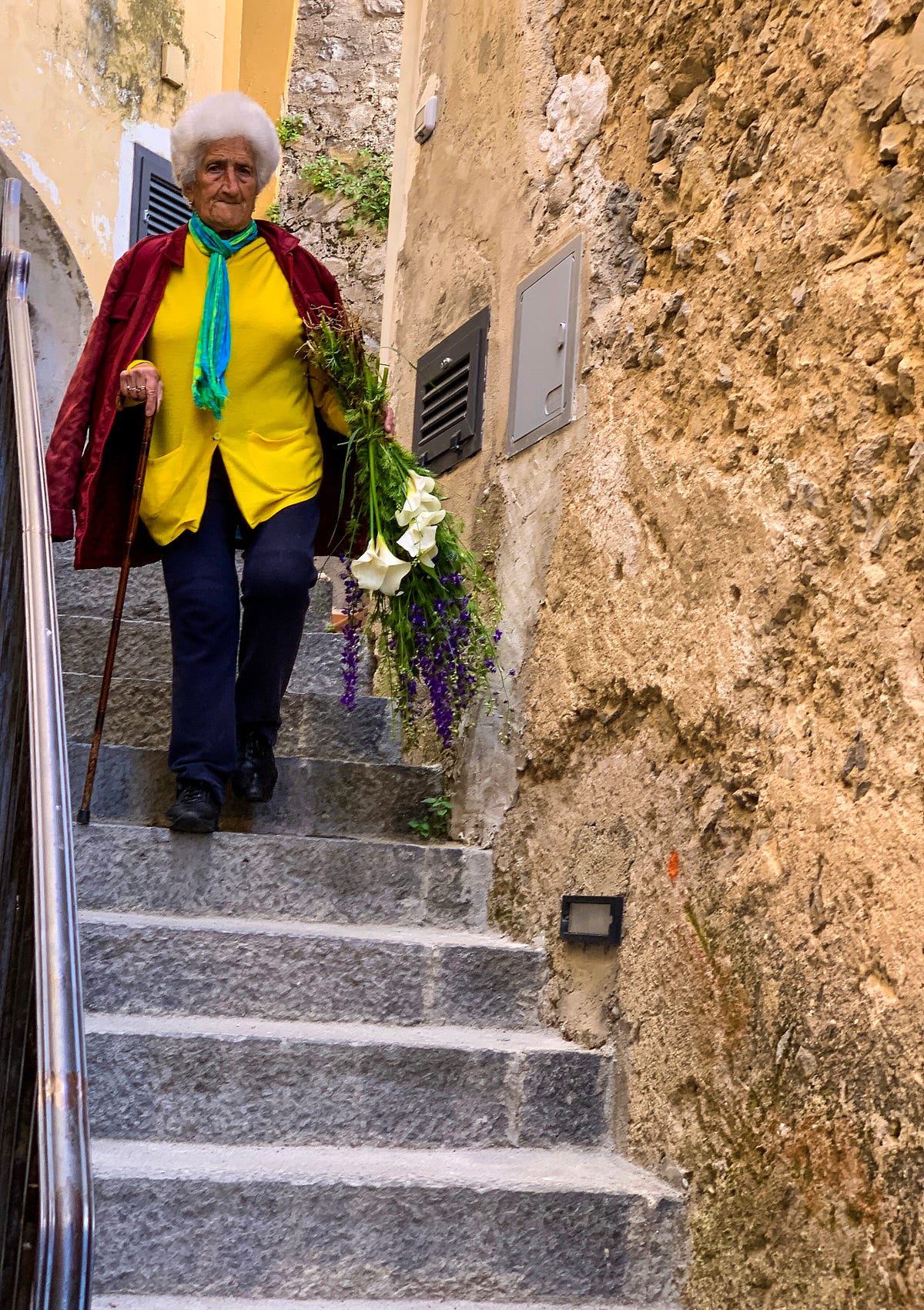Positano is a town best enjoyed with a thick wad of cash, a healthy pair of lungs, and excellent knees. The first is essential, though if you are in possession of the second and third you might be able to get away with less of the first, as we will see in this post.
Positano is intensely instagrammable. Consequently, hotels are licensed to charge north of €300 a night for a room and €20 for a plate of pasta. The €300-a-night-hotel probably has a stunning view and the €20-pasta cannot be faulted for taste.
This is not surprising. After all, it is Italy, the Amalfi coast, where all views are stunning and everyone knows how to make good pasta. But a man cannot live on lunch alone; there is breakfast and dinner to consider as well. Hence we must return to the aforementioned lungs and knees to find a more economic solution to Positano.

Positano is a vertical town, a town built into the conclave of two hills on the Lattari mountains. It is a town of steep steps and narrow, winding roads, with colourful buildings arranged in eight or nine tiers all the way down to the sea. If you were to walk up from the main beach to Nocelle, a hamlet perched next to Positano on the cliffside, you would climb over 1,800 steps. In fact, any decent wander around the town itself will clock 1,000 steps or more, so a certain amount of lung capacity and knee stability are required for the proper enjoyment of this town where Mick Jagger wrote the Midnight Rambler and George Clooney comes for dinner.
For those whose wad of cash is thin, but lungs capacious, knees sturdy and will steely, salvation lies above, in the little villages that squat on the mountainside and look down on Positano balefully. There is Bomerano, from where you can ride-and-walk into Positano everyday if you are determined enough.

Or the good neighbourhood of Moiano, where you can get a spacious apartment in the region of €70 a night. From La Petite Maison in Moiano, for instance, it is roughly a 60-minute walk to the edge of Positano, by an ancient mountain trail. The path is stony but safe, with wooden railings, and pretty much idiot-proof. When you start the trail, the visibility might not always be good, for the simple reason that you will be walking through clouds.
Occasionally, the wind will do you a favour and shove the clouds aside, and you get to see the town below, its rooftops and winding roads and swimming pools on rooftops, and the blue of the Meditterranean dotted with the whites of yachts and boats. Once you reach the top of the town, there start the stairs, which will take you all the way down to Spiaggia Grande, the main beach, by way of the Michelin-starred restaurant of the €20-pasta fame.
On your return, allow 30 minutes of StairMaster to get you up to the trailhead from the sea. Then, a continuous climb. There are no flats on this trail. If you are in decent shape, and do not stop to catch your breath on the pretext of taking in the view too often, you should find yourself in about two hours on the main road, which the locals take for four-lane motorway but is actually a single-track road of ungenerous proportion. It is a much harder (though shorter) hike up till this point than the nearby and more famous Path of the Gods, and best not attempted when weighed down with Italian cuisine.
But then, why should you? Atop, in this neighbourhood, there are many places — La Sorgente Del Melo, for instance — where you get rustic Italian food for a fraction of the Positano cost. How does €20 sound to you for an all-organic three-course meal, which could well end with a free shot of limoncello if the friendly proprietor likes your face?

Previous Next